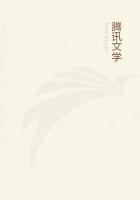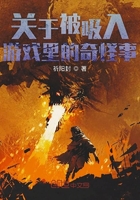7The bones in animals are all connected with one single bone, and are interconnected, like the veins, in one unbroken sequence; and there is no instance of a bone standing apart by itself. In all animals furnished with bones, the spine or backbone is the point of origin for the entire osseous system. The spine is composed of vertebrae, and it extends from the head down to the loins. The vertebrae are all perforated, and, above, the bony portion of the head is connected with the topmost vertebrae, and is designated the 'skull'. And the serrated lines on the skull are termed 'sutures'.
The skull is not formed alike in all animals. In some animals the skull consists of one single undivided bone, as in the case of the dog; in others it is composite in structure, as in man; and in the human species the suture is circular in the female, while in the male it is made up of three separate sutures, uniting above in three-corner fashion; and instances have been known of a man's skull being devoid of suture altogether. The skull is composed not of four bones, but of six; two of these are in the region of the ears, small in comparison with the other four. From the skull extend the jaws, constituted of bone. (Animals in general move the lower jaw; the river crocodile is the only animal that moves the upper one.) In the jaws is the tooth-system; and the teeth are constituted of bone, and are half-way perforated; and the bone in question is the only kind of bone which it is found impossible to grave with a graving tool.
On the upper part of the course of the backbone are the collar-bones and the ribs. The chest rests on ribs; and these ribs meet together, whereas the others do not; for no animal has bone in the region of the stomach. Then come the shoulder-bones, or blade-bones, and the arm-bones connected with these, and the bones in the hands connected with the bones of the arms. With animals that have forelegs, the osseous system of the foreleg resembles that of the arm in man.
Below the level of the backbone, after the haunch-bone, comes the hip-socket; then the leg-bones, those in the thighs and those in the shins, which are termed colenes or limb-bones, a part of which is the ankle, while a part of the same is the so-called 'plectrum'
in those creatures that have an ankle; and connected with these bones are the bones in the feet.
Now, with all animals that are supplied with blood and furnished with feet, and are at the same time viviparous, the bones do not differ greatly one from another, but only in the way of relative hardness, softness, or magnitude. A further difference, by the way, is that in one and the same animal certain bones are supplied with marrow, while others are destitute of it. Some animals might on casual observation appear to have no marrow whatsoever in their bones: as is the case with the lion, owing to his having marrow only in small amount, poor and thin, and in very few bones; for marrow is found in his thigh and armbones. The bones of the lion are exceptionally hard; so hard, in fact, that if they are rubbed hard against one another they emit sparks like flint-stones. The dolphin has bones, and not fish-spine.
Of the other animals supplied with blood, some differ but little, as is the case with birds; others have systems analogous, as fishes; for viviparous fishes, such as the cartilaginous species, are gristle-spined, while the ovipara have a spine which corresponds to the backbone in quadrupeds. This exceptional property has been observed in fishes, that in some of them there are found delicate spines scattered here and there throughout the fleshy parts. The serpent is similarly constructed to the fish; in other words, his backbone is spinous. With oviparous quadrupeds, the skeleton of the larger ones is more or less osseous; of the smaller ones, more or less spinous. But all sanguineous animals have a backbone of either one kind or other: that is, composed either of bone or of spine.
The other portions of the skeleton are found in some animals and not found in others, but the presence or the absence of this and that part carries with it, as a matter of course, the presence or the absence of the bones or the spines corresponding to this or that part. For animals that are destitute of arms and legs cannot be furnished with limb-bones: and in like manner with animals that have the same parts, but yet have them unlike in form; for in these animals the corresponding bones differ from one another in the way of relative excess or relative defect, or in the way of analogy taking the place of identity. So much for the osseous or spinous systems in animals.
8Gristle is of the same nature as bone, but differs from it in the way of relative excess or relative defect. And just like bone, cartilage also, if cut, does not grow again. In terrestrial viviparous sanguinea the gristle formations are unperforated, and there is no marrow in them as there is in bones; in the selachia, however--for, be it observed, they are gristle-spined--there is found in the case of the flat space in the region of the backbone, a gristle-like substance analogous to bone, and in this gristle-like substance there is a liquid resembling marrow. In viviparous animals furnished with feet, gristle formations are found in the region of the ears, in the nostrils, and around certain extremities of the bones.
9Furthermore, there are parts of other kinds, neither identical with, nor altogether diverse from, the parts above enumerated: such as nails, hooves, claws, and horns; and also, by the way, beaks, such as birds are furnished with-all in the several animals that are furnished therewithal. All these parts are flexible and fissile; but bone is neither flexible nor fissile, but frangible.















